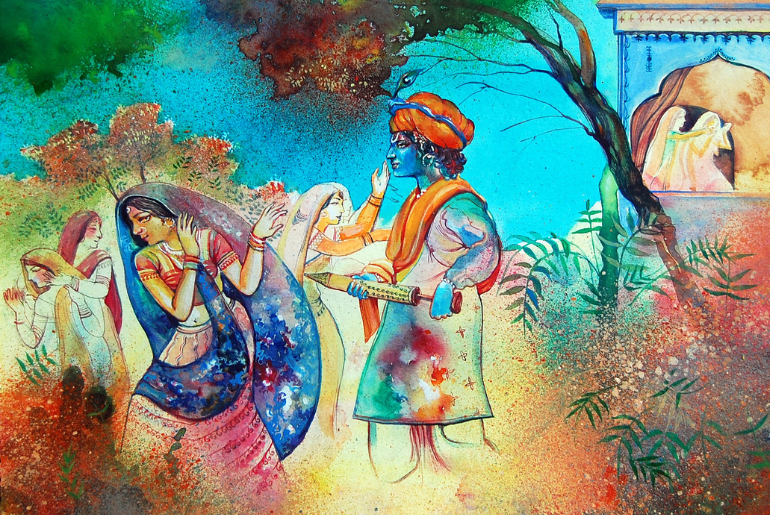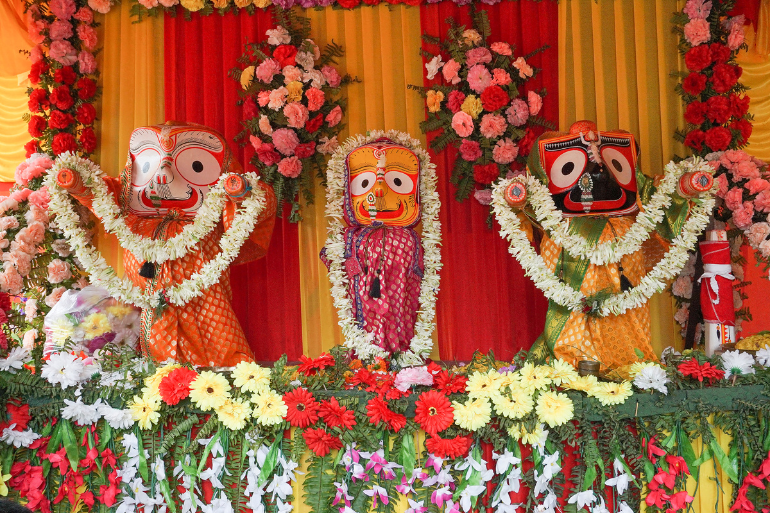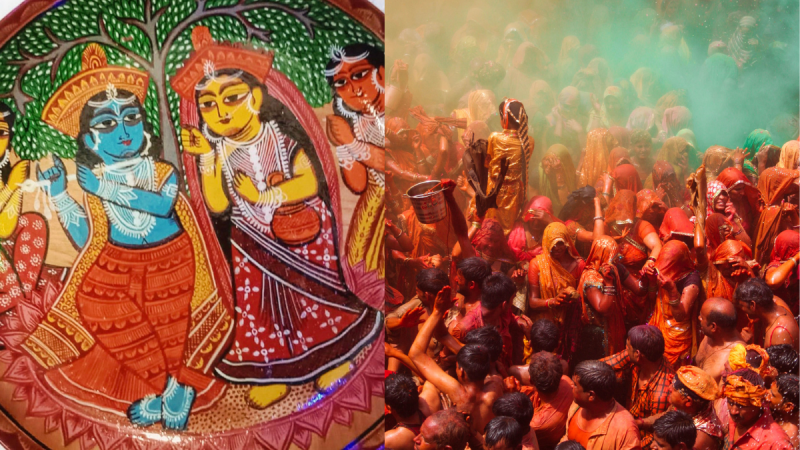Dol Jatra, also known as Dol Purnima or Doul Utsav, signifies the joyous festival of colours in the eastern regions of India, particularly West Bengal, Assam, Odisha, and Tripura. Dol Jatra is celebrated in Eastern India with fervour on the full moon day of the Phalguna month in the Hindu calendar. It often coincides with the North Indian festival of Holi. While both festivals share a vibrant display of colours, Dol Jatra has distinct characteristics steeped in the rich cultural heritage of the East.
The History Of It All

The legend associated with Holi revolves around the demon king Hiranyakashyapu, who possessed a special boon that made him invincible. His son, Prahlad, remained a devoted follower of Lord Vishnu.
Hiranyakashyapu’s sister, Holika, who was immune to fire, attempted to burn Prahlad alive. However, Prahlad’s unwavering devotion to Vishnu saved him, and Holika perished in the flames. The burning of Holika signifies the triumph of good over evil and is celebrated with a bonfire on the eve of Holi.
Dol Jatra, on the other hand, draws inspiration from the playful romance between Lord Krishna and Radha. According to Hindu mythology, on the full moon day of Phalguna, Lord Krishna expressed his love for Radha by playfully smearing colours on her while they were swinging in the forests of Vrindavan. This act of playful love and the blossoming of spring are commemorated through Dol Jatra.
Also Read: Bengali Cuisine: Here’s A Simple Recipe To Cook Yummy Shol Macher Lonka Pora At Home
A Colourfully Devotional Experience

Dol Jatra commences with the worship of Lord Krishna and Radha. Idols are adorned with vibrant clothes and flowers, creating a visually stunning display. Devotees offer sweets and sing devotional songs, recreating the playful mood of Krishna and Radha.
The core ritual involves the offering of “Abir,” a dry, fragrant powder made from crushed leaves and sandalwood. Unlike the water-filled colours used in Holi, Abir is gently applied to the forehead and cheeks, signifying blessings and the spirit of playful love.
Also read:Holi Hai On Akasa Air! Relish Rabdi, Dahi Bhalla & More On Flights This Month
A Celebration Steeped In Culture

An intricately decorated swing is set up, representing the celestial pedestal of Krishna and Radha. Devotees sing folk songs and hymns while gently swaying the swing, creating a mesmerising spectacle. Traditional delicacies like “Peda,” a sweet made with condensed milk, and “Pantua,” a steamed rice cake, are shared amongst friends and family, fostering a spirit of togetherness.
Dol Jatra also signifies the arrival of spring. The vibrant colours used during the festival represent the blossoming of nature and the renewal of life. People dress in colourful attire, adding to the festive atmosphere.
Cover Image Courtesy: @advsanjoy/X (Formerly, Twitter), Canva
For more such snackable content, interesting discoveries and the latest updates on food, travel and experiences in your city, download the Curly Tales App. Download HERE.
First Published: March 13, 2024 3:56 PM




